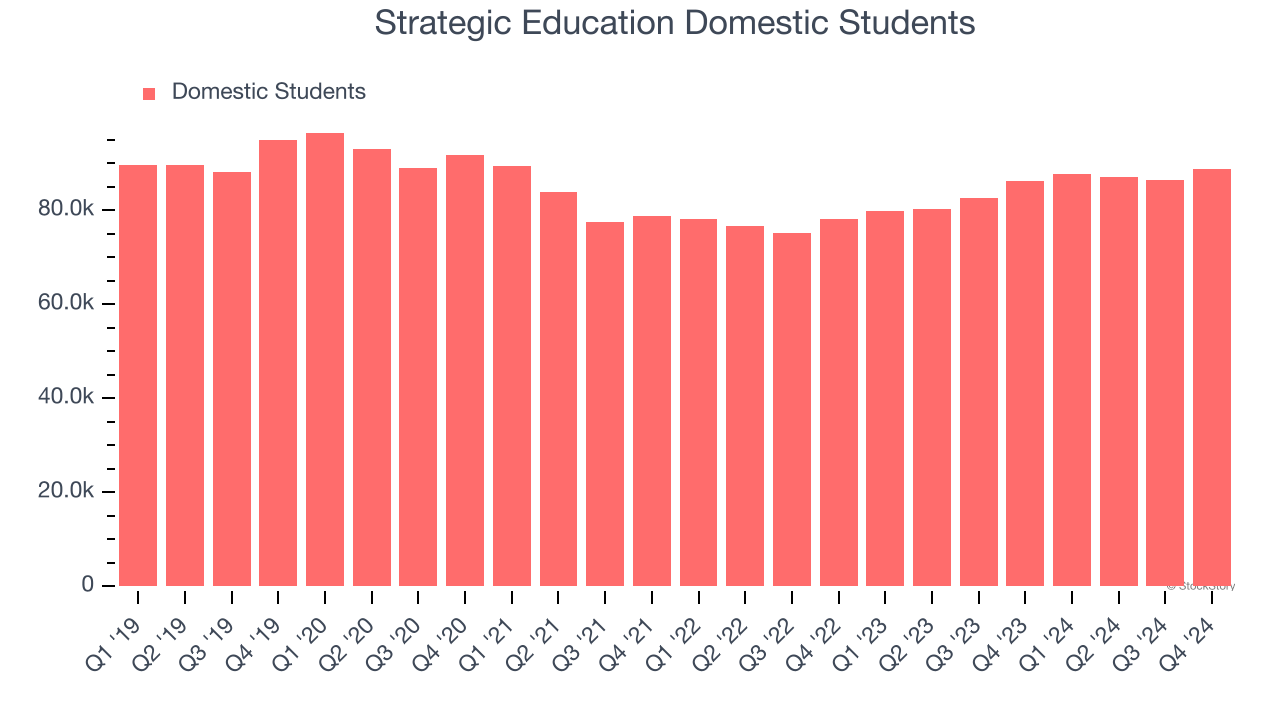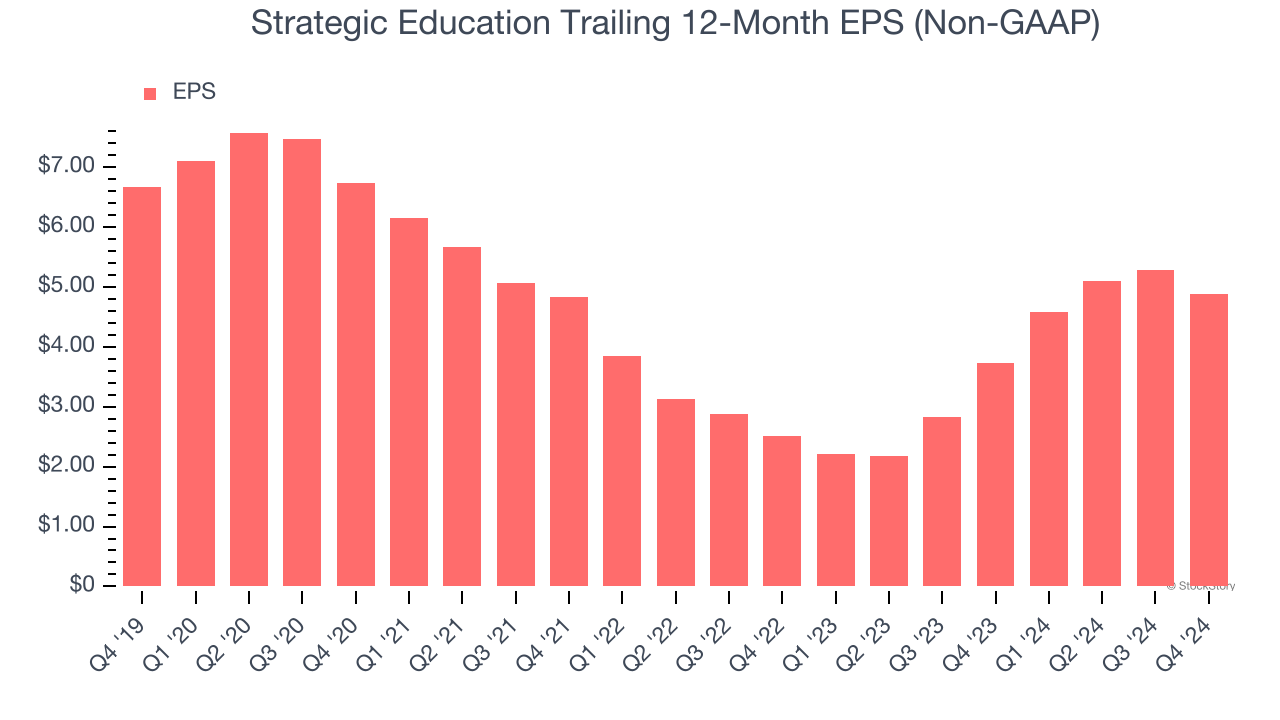
Strategic Education has followed the market’s trajectory closely. The stock is down 8.7% to $80.50 per share over the past six months while the S&P 500 has lost 10.5%. This may have investors wondering how to approach the situation.
Is now the time to buy Strategic Education, or should you be careful about including it in your portfolio? Get the full breakdown from our expert analysts, it’s free.
Despite the more favorable entry price, we're swiping left on Strategic Education for now. Here are three reasons why there are better opportunities than STRA and a stock we'd rather own.
Why Do We Think Strategic Education Will Underperform?
Formed through the merger of Strayer Education and Capella Education in 2018, Strategic Education (NASDAQ: STRA) is a career-focused higher education provider.
1. Weak Growth in Domestic Students Points to Soft Demand
Revenue growth can be broken down into changes in price and volume (for companies like Strategic Education, our preferred volume metric is domestic students). While both are important, the latter is the most critical to analyze because prices have a ceiling.
Strategic Education’s domestic students came in at 88,860 in the latest quarter, and over the last two years, averaged 6.7% year-on-year growth. This performance was underwhelming and suggests it might have to lower prices or invest in product improvements to accelerate growth, factors that can hinder near-term profitability. 
2. EPS Trending Down
We track the long-term change in earnings per share (EPS) because it highlights whether a company’s growth is profitable.
Sadly for Strategic Education, its EPS declined by 6.1% annually over the last five years while its revenue grew by 4.1%. This tells us the company became less profitable on a per-share basis as it expanded.

3. Previous Growth Initiatives Haven’t Impressed
Growth gives us insight into a company’s long-term potential, but how capital-efficient was that growth? Enter ROIC, a metric showing how much operating profit a company generates relative to the money it has raised (debt and equity).
Strategic Education historically did a mediocre job investing in profitable growth initiatives. Its five-year average ROIC was 3.8%, lower than the typical cost of capital (how much it costs to raise money) for consumer discretionary companies.

Final Judgment
We cheer for all companies serving everyday consumers, but in the case of Strategic Education, we’ll be cheering from the sidelines. After the recent drawdown, the stock trades at 13.8× forward price-to-earnings (or $80.50 per share). This valuation tells us it’s a bit of a market darling with a lot of good news priced in - you can find better investment opportunities elsewhere. We’d suggest looking at one of our top digital advertising picks.
Stocks We Would Buy Instead of Strategic Education
Donald Trump’s victory in the 2024 U.S. Presidential Election sent major indices to all-time highs, but stocks have retraced as investors debate the health of the economy and the potential impact of tariffs.
While this leaves much uncertainty around 2025, a few companies are poised for long-term gains regardless of the political or macroeconomic climate, like our Top 6 Stocks for this week. This is a curated list of our High Quality stocks that have generated a market-beating return of 175% over the last five years.
Stocks that made our list in 2019 include now familiar names such as Nvidia (+2,183% between December 2019 and December 2024) as well as under-the-radar businesses like Sterling Infrastructure (+1,096% five-year return). Find your next big winner with StockStory today for free.




